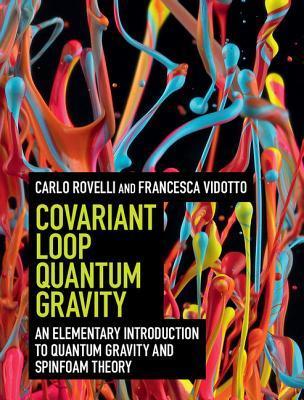What do you think?
Rate this book


277 pages, Hardcover
First published October 23, 2014

A particular representation that I have studied involves setting up a large number of nodes, connected in a network, and repeatedly updating according to some local rewrite rule. Within this representation, one can in effect just start enumerating possible universes, specifying initial conditions and updating rules. Some candidate universes are very obviously not our physical universe. They have no notion of time, or no communication between different parts, or an infinite number of dimensions of space, or some other obviously fatal pathology.Well... the spin networks that Rovelli and Vidotta focus on in their book are, if I'm understanding Wolfram correctly, an example of the kind of thing he's referring to. And spin networks do indeed imply General Relativity - though the way R&V tell it, that was an extremely nontrivial discovery which took decades to establish. But Wolfram says it's a special case of a much more general result. If so, quite amazing. I just checked, and R&V do not mention Wolfram at all; so far, Wolfram has not mentioned LQG.
But it turns out that there are large classes of candidate universes that already show remarkably suggestive features. For example, any universe that has a notion of time with certain robustness properties turns out in an appropriate limit to exhibit Special Relativity. And even more significantly, any universe that exhibits a certain conservation of finite dimensionality - as well as generating a certain level of microscopic randomness - will lead on a large scale to spacetime that follows Einstein's equations for General Relativity.
A big result I found nearly 20 years ago (that still hasn’t been widely understood) is that when you look at a large enough network of the kind I studied you can show that its averaged behavior follows Einstein’s equations for gravity. In other words, without putting any fancy physics into the underlying model, it ends up automatically emerging. I think it’s pretty exciting.The link doesn't work properly any more, but it certainly looks like it's meant to go to section 15 of chapter 9 of his 2002 book A New Kind of Science. This, however, only gives further vague hints.